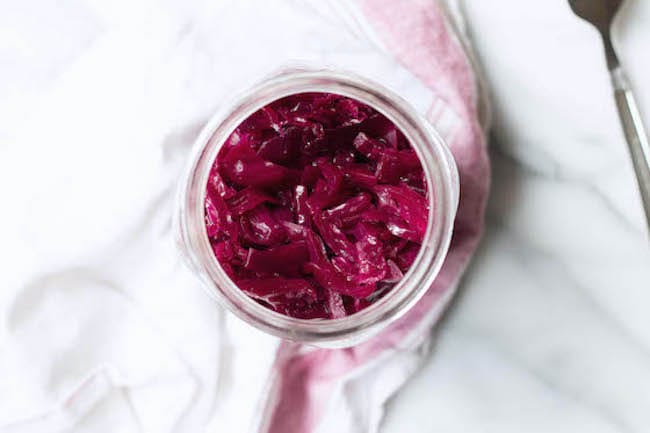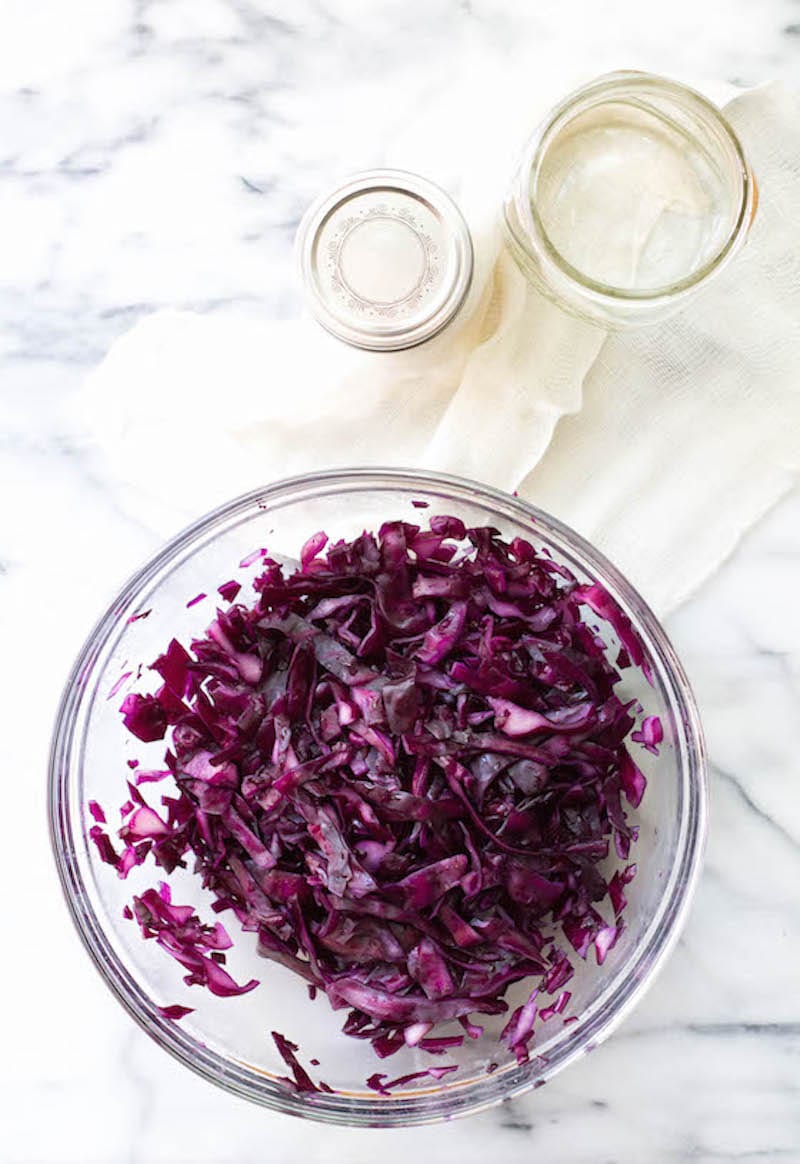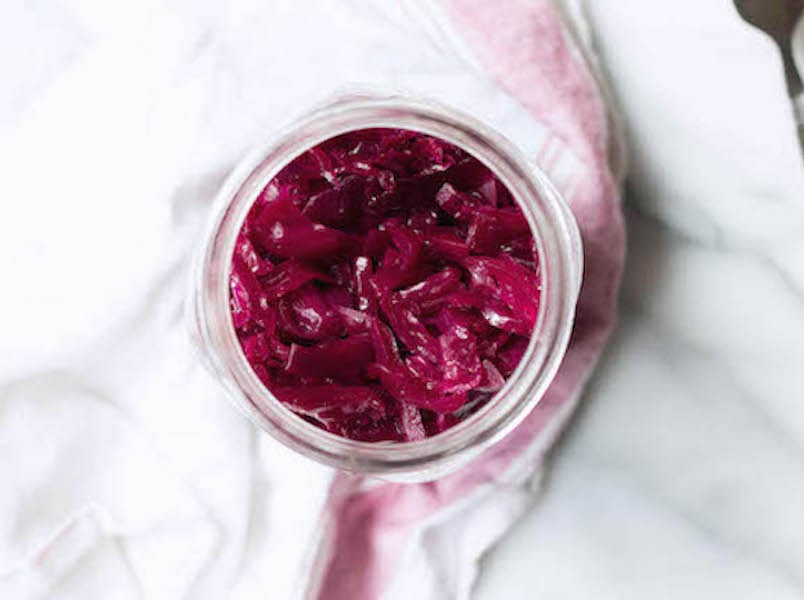Add more probiotics to your diet through fermented foods, starting with this easy, homemade sauerkraut.

Fermented foods can sound like a daunting task to take on yourself… but as it turns out, it’s not so hard! And sauerkraut is especially easy. I just made my first batch and had to share it.
The fermented food inspiration came to mind after a recent nutrition school lesson on treating and feeding the gut. We all know how great probiotics and a yogurt a day can be for you. Getting more friendly gut bacteria is super important to support healthy digestion and your immune system. It’s the epicenter of your health and has to always come first and foremost.

tip: adding a large cabbage leaf to the top as a cap keeps your weight from touching all of your kraut.
Adding fermented foods in to your day to day is a great habit to form, as it will aid in digestion. It’s also something very common across cultures, and it’s usually found in just a small amount on the table at a meal. Like that small pickled ginger on your sushi plate for example!
So I’m resolving to include a little plate of something fermented with dinner. My morning coconut yogurt is great but, but fermented vegetables are next level. There are often many more strains of bacteria found in something like a couple ounces of sauerkraut! So, I figured I’d start slow and easy with this two-ingredient sauerkraut and work my way up to different flavors from there. You can get pretty creative with it. And using red cabbage makes for a magenta sauerkraut which is stunning on any plate!


Ingredients
- 1 medium head of cabbage (red or green)
- 1–1 1/2 tbsp kosher salt or 3/4 tbsp sea salt
- optional: caraway seeds or other seasonings
TOOLS
- 2– quart wide mouth mason jar
- one smaller jar that fits inside the larger one (like a jelly jar)
- rocks (dry beans or weights)
- cheesecloth or dish towel
- chef’s knife or mandolin and cutting board
Instructions
- Slice cabbage thinly using either a knife and board or mandolin for extra thin slices. The thinner you slice it the quicker it will ferment. Reserve one good leaf from the cabbage head to use as a cap later.
- Add salt to a bowl with the sliced cabbage and with your hands massage for 5-10 minutes as natural water releases from the cabbage and it becomes limp.
- Add cabbage and liquid to the mason jar and tightly pack it using your hands or a large spoon. Add the cabbage leaf from before on top as a cap.
- In the small jar, add rocks or other weights to it and close. Add this smaller jar to the top of the cabbage and squeeze down.
- Cover the jar with a cheesecloth or dish towel and rubber band.
- Store the jar on your counter at room temperature for 3-10 days as it ferments. For the first 24 hours, press down on the small weighted jar every once in a while (you should see after the first day that the water is covering all the cabbage).
- After the 3rd day, taste the cabbage each day until you like the taste. You should start to see the color change after the 3rd day (red cabbage should turn from purple to pink and green cabbage will turn yellow). If you find any mold, discard the whole batch.
- Once you’re ready and like the taste, remove the small weighted jar and put the mason jar lid on and store in the refrigerator for up to several months.
- Category: Side























